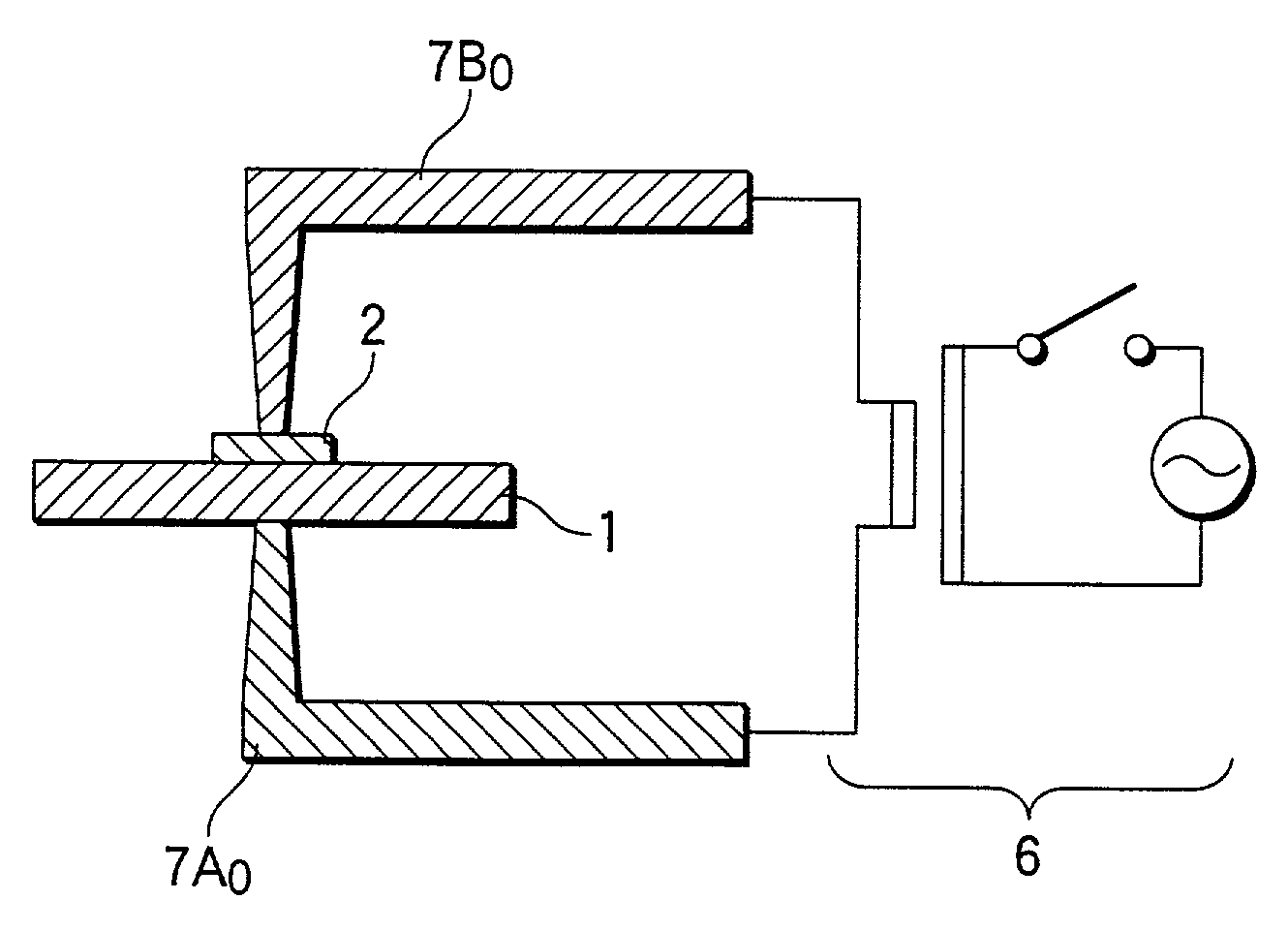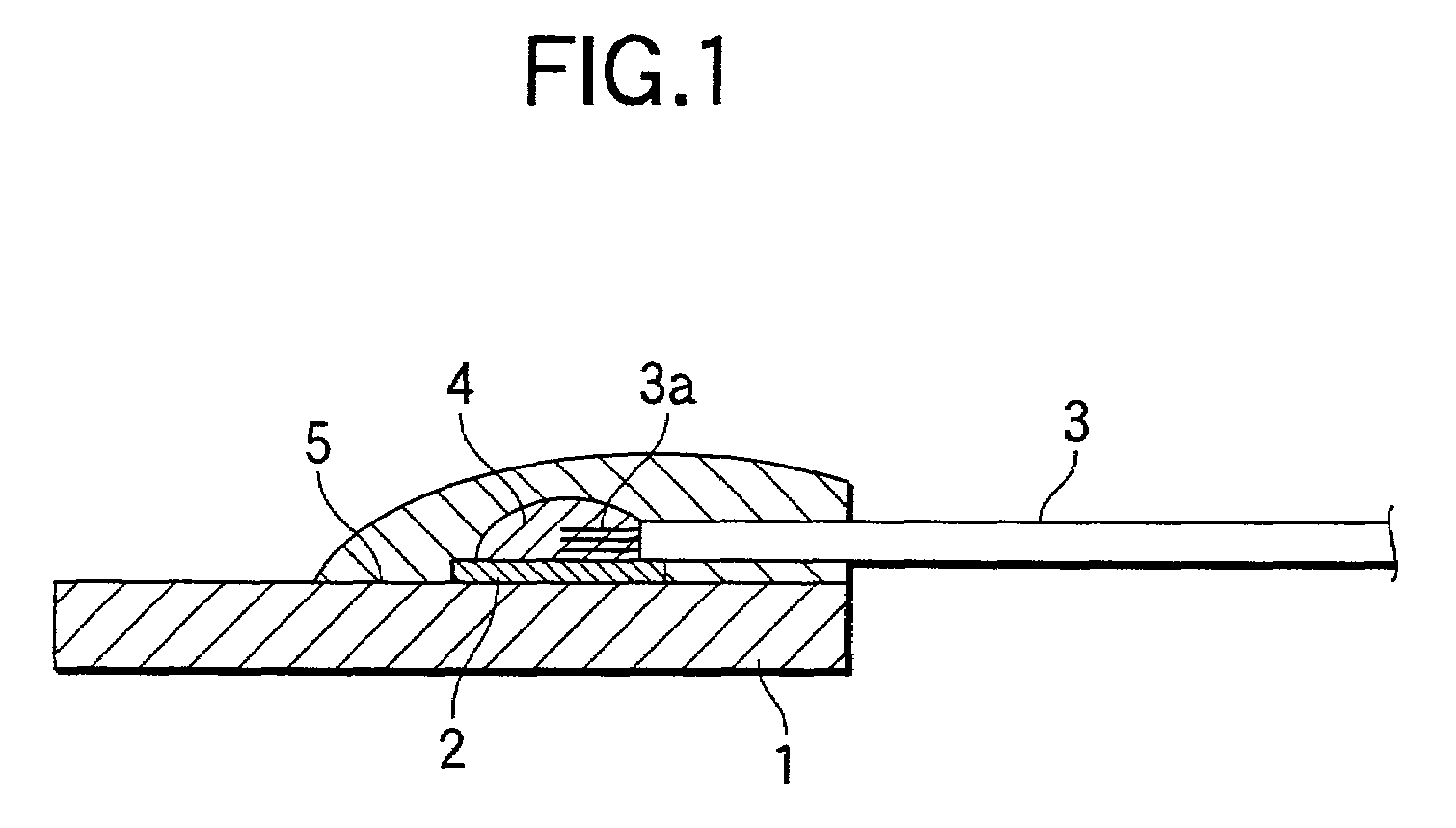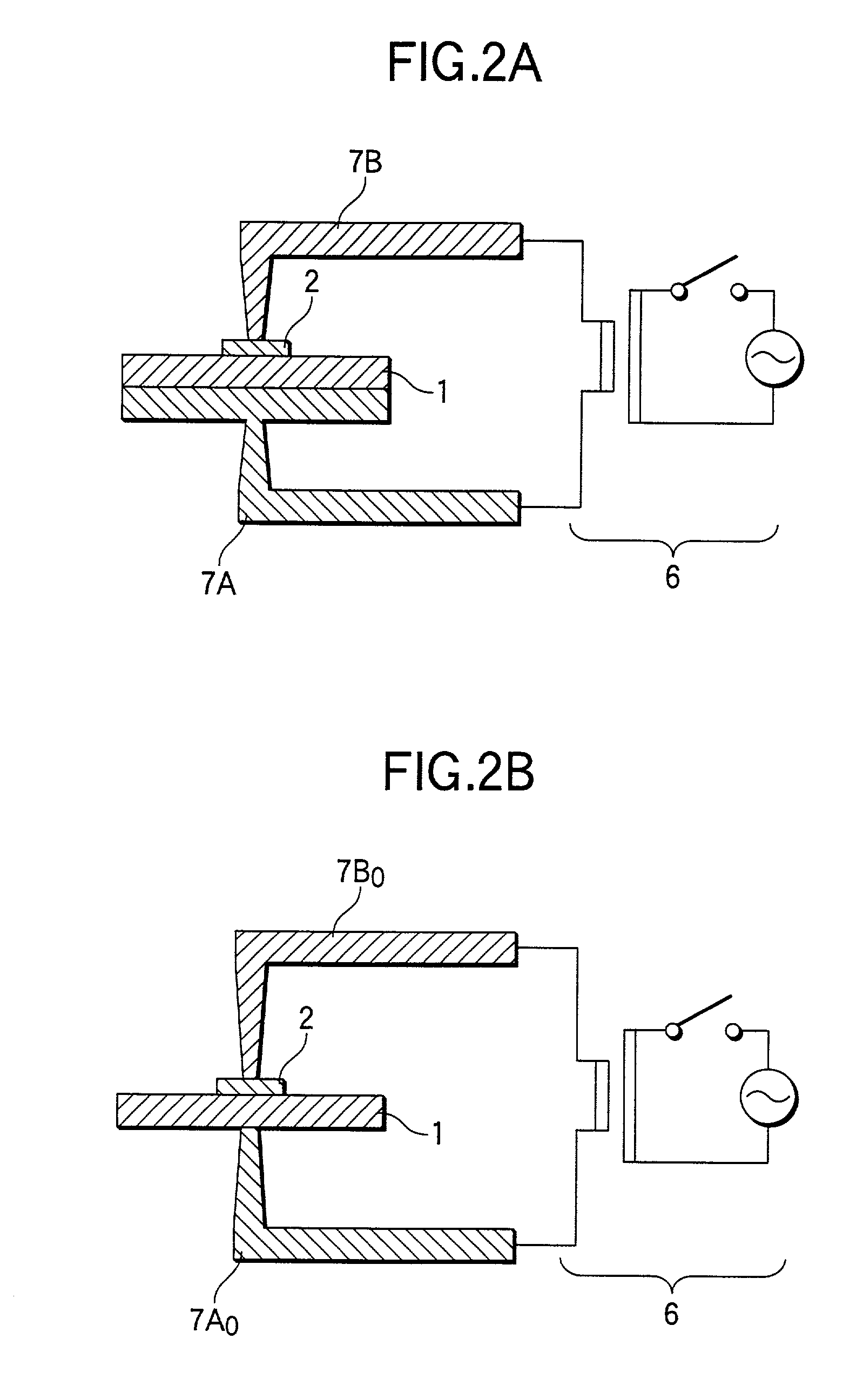Lead wire attachment method, electrode, and spot welder
a lead wire and electrode technology, applied in the direction of spinal electrodes, electrotherapy, therapy, etc., can solve the problems of difficulty in attaching a lead wire to the electrode element, high cost of materials, and inability to use high purity materials for common applications
- Summary
- Abstract
- Description
- Claims
- Application Information
AI Technical Summary
Benefits of technology
Problems solved by technology
Method used
Image
Examples
Embodiment Construction
[0038]FIG. 1 shows a basic type biomedical electrostimulating electrode according to the present invention. In the present embodiment, the electrode is to be used for electroanesthesia. An electrode element 1 employed herein is formed from titanium and assumes the shape of a disk. A copper plate 2 is mounted on top of the electrode element 1 by spot welding. One end of a conductor section 3a of a lead wire assy 3 is soldered to the top of the copper plate 2 by solder 4. The solder 4, the copper plate 2, and the end of the lead wire assy 3 are covered with an insulation section 5. For instance, epoxy resin or silicon resin is used for the insulation section 5.
[0039]In order to produce such an electrode, the copper plate 2 is mounted on the electrode element 1 by spot welding. Next, one end of the lead wire 3a of the lead wire assy 3 is soldered to the copper plate 2. Further, the solder 4, the copper plate 2, and the end of the lead wire assy 3 are coated, to thereby form the insulat...
PUM
| Property | Measurement | Unit |
|---|---|---|
| Corrosion | aaaaa | aaaaa |
| strength | aaaaa | aaaaa |
| purity | aaaaa | aaaaa |
Abstract
Description
Claims
Application Information
 Login to View More
Login to View More - R&D
- Intellectual Property
- Life Sciences
- Materials
- Tech Scout
- Unparalleled Data Quality
- Higher Quality Content
- 60% Fewer Hallucinations
Browse by: Latest US Patents, China's latest patents, Technical Efficacy Thesaurus, Application Domain, Technology Topic, Popular Technical Reports.
© 2025 PatSnap. All rights reserved.Legal|Privacy policy|Modern Slavery Act Transparency Statement|Sitemap|About US| Contact US: help@patsnap.com



